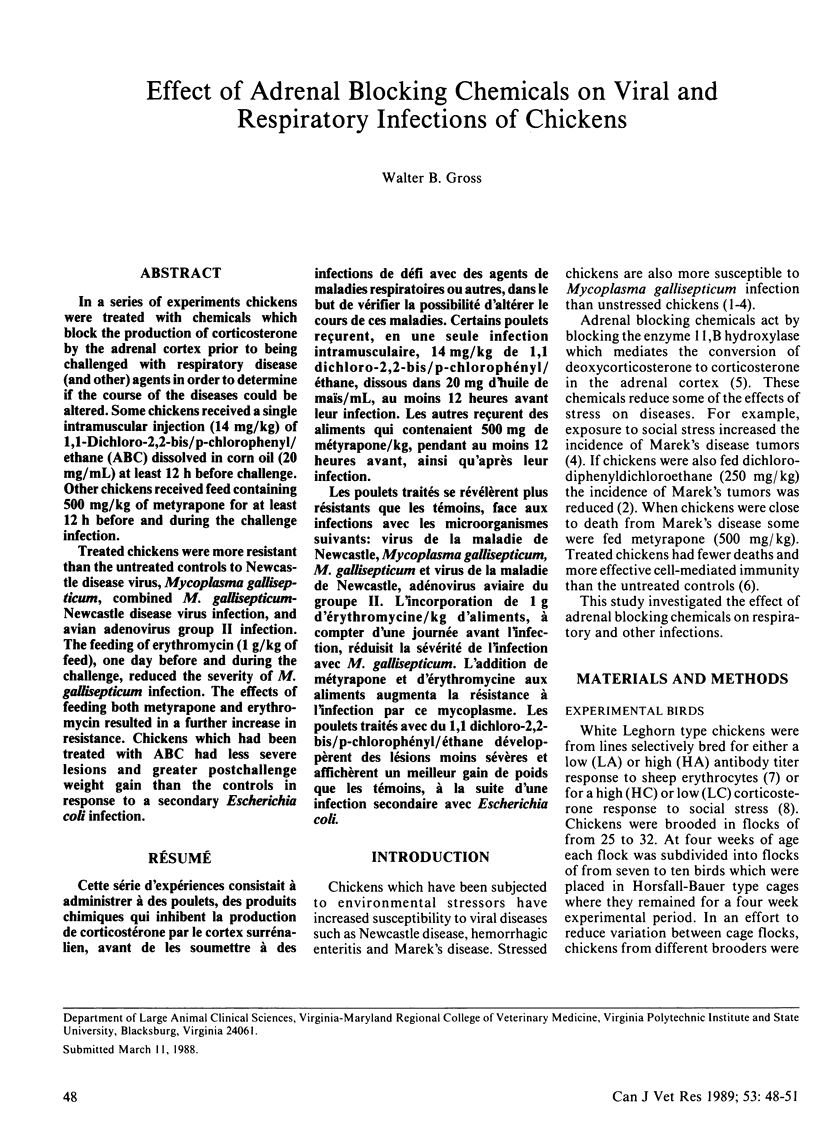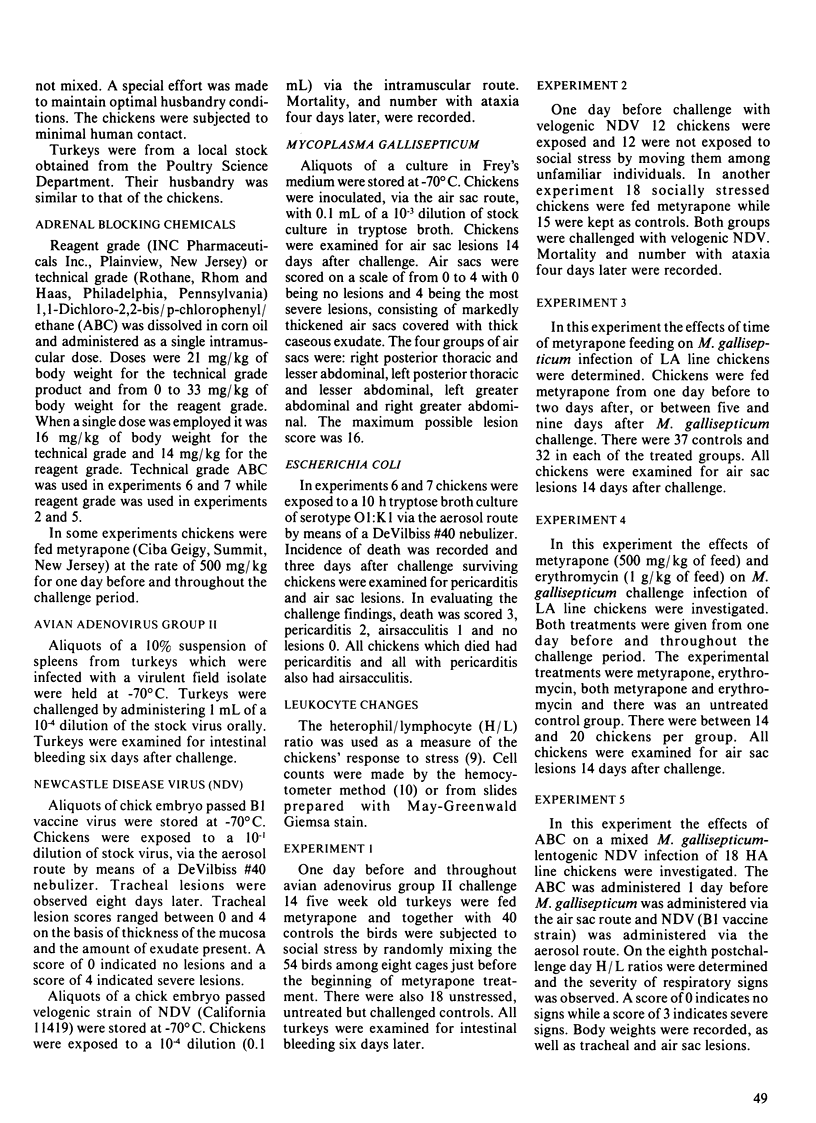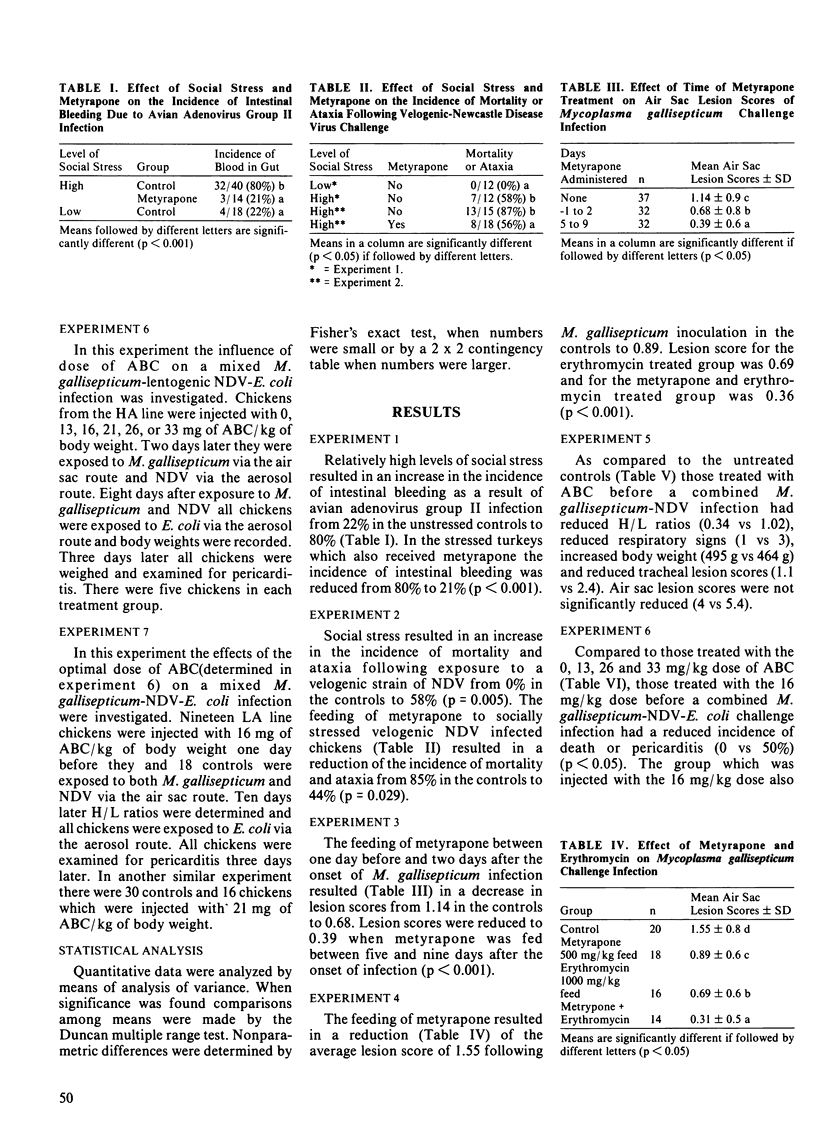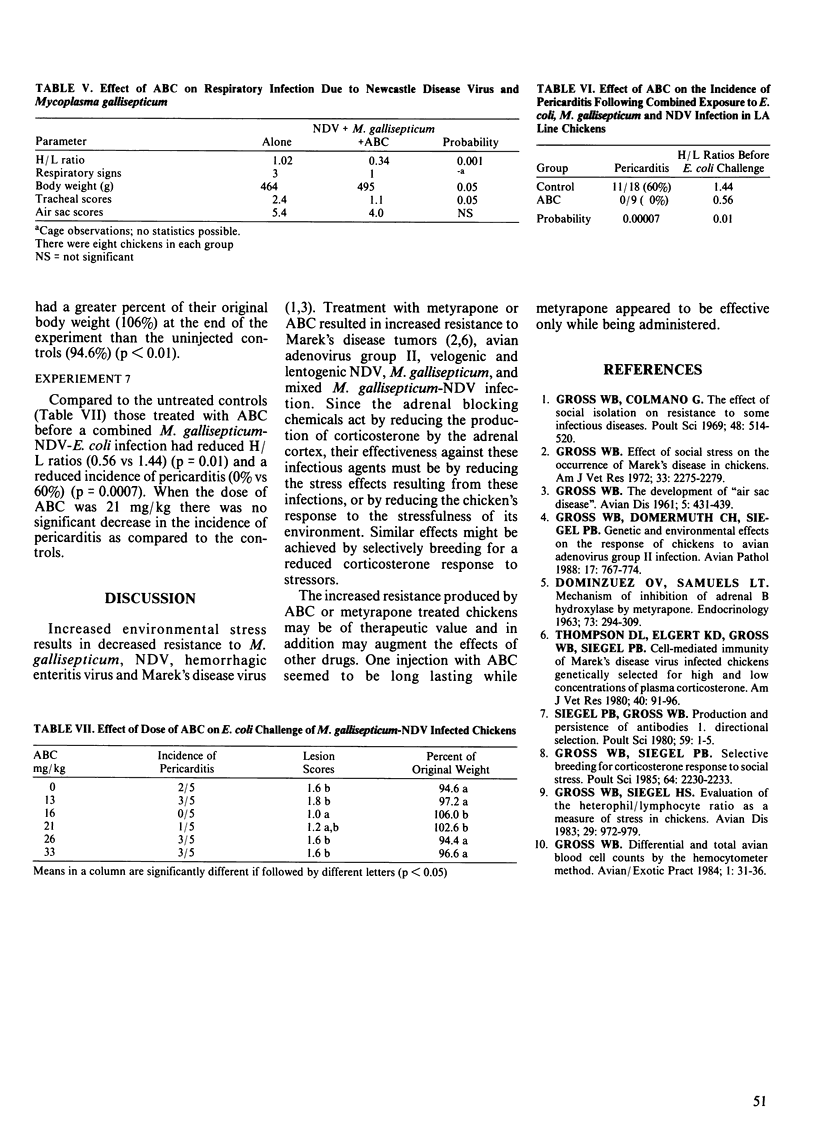Abstract
In a series of experiments chickens were treated with chemicals which block the production of corticosterone by the adrenal cortex prior to being challenged with respiratory disease (and other) agents in order to determine if the course of the diseases could be altered. Some chickens received a single intramuscular injection (14 mg/kg) of 1,1-dichloro-2,2-bis/p-chlorophenyl/ethane (ABC) dissolved in corn oil (20 mg/mL) at least 12 h before challenge. Other chickens received feed containing 500 mg/kg of metyrapone for at least 12 h before and during the challenge infection. Treated chickens were more resistant than the untreated controls to Newcastle disease virus, Mycoplasma gallisepticum, combined M. gallisepticum-Newcastle disease virus infection, and avian adenovirus group II infection. The feeding of erythromycin (1 g/kg of feed), one day before and during the challenge, reduced the severity of M. gallisepticum infection. The effects of feeding both metyrapone and erythromycin resulted in a further increase in resistance. Chickens which had been treated with ABC had less severe lesions and greater postchallenge weight gain than the controls in response to a secondary Escherichia coli infection.
Full text
PDF



Selected References
These references are in PubMed. This may not be the complete list of references from this article.
- DOMINGUEZ O. V., SAMUELS L. T. MECHANISM OF INHIBITION OF ADRENAL STEROID 11BETA-HYDROXYLASE BY METHOPYRAPONE (METOPIRONE). Endocrinology. 1963 Sep;73:304–309. doi: 10.1210/endo-73-3-304. [DOI] [PubMed] [Google Scholar]
- Gross W. B., Colmano G. The effect of social isolation on resistance to some infectious diseases. Poult Sci. 1969 Mar;48(2):514–520. doi: 10.3382/ps.0480514. [DOI] [PubMed] [Google Scholar]
- Gross W. B. Effect of social stress on occurrence of Marek's disease in chickens. Am J Vet Res. 1972 Nov;33(11):2275–2279. [PubMed] [Google Scholar]
- Gross W. B., Siegel H. S. Evaluation of the heterophil/lymphocyte ratio as a measure of stress in chickens. Avian Dis. 1983 Oct-Dec;27(4):972–979. [PubMed] [Google Scholar]
- Gross W. B., Siegel P. B. Selective breeding of chickens for corticosterone response to social stress. Poult Sci. 1985 Dec;64(12):2230–2233. doi: 10.3382/ps.0642230. [DOI] [PubMed] [Google Scholar]
- Thompson D. L., Elgert K. D., Gross W. B., Siegel P. B. Cell-mediated immunity in Marek's disease virus-infected chickens genetically selected for high and low concentrations of plasma corticosterone. Am J Vet Res. 1980 Jan;41(1):91–96. [PubMed] [Google Scholar]


